Heritage Emergency Fund supports hundreds of organisations across the UK
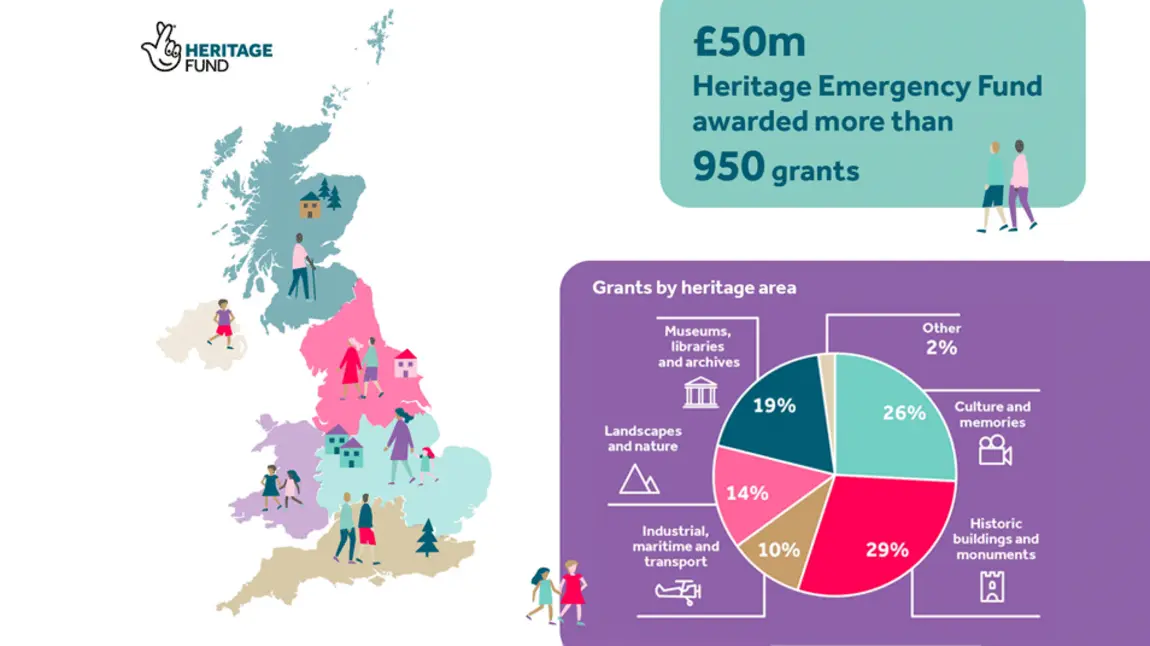
In total, we awarded 961 grants worth £49.8million to help the heritage community support staff, cover essential maintenance and utility costs, and prepare to safely reopen.
This figure represents a 77% success rate across the total applications received.
Ros Kerslake, Chief Executive of The National Lottery Heritage Fund, said: “This is the biggest heritage crisis I have seen in my lifetime. Every area of heritage we support has been severely affected, from wildlife trusts and gardens to museums and historic railways. Many of the places we know and love faced permanent closure within weeks of the start of lockdown.
“We realised that heritage would need significant support to survive, and we have worked incredibly hard to provide a lifeline and get grants out of the door in record time. We cannot save everyone and challenges still lie ahead, but we are grateful that, thanks to National Lottery players, we have been able to help so many.”
Where the money went
The Heritage Emergency Fund provided grants across the length and breadth of the UK, from the Northern Isles of Scotland to the southernmost reaches of Cornwall.
The highest proportion of grants supported organisations that manage historic buildings and monuments (29%). This was closely followed by community and intangible heritage, such as theatre groups, cultural associations and those supporting traditional skills such as dry stone walling (26%). Museums, libraries and archives received 19%, natural heritage 14% and industrial, maritime and transport heritage sites 10%.
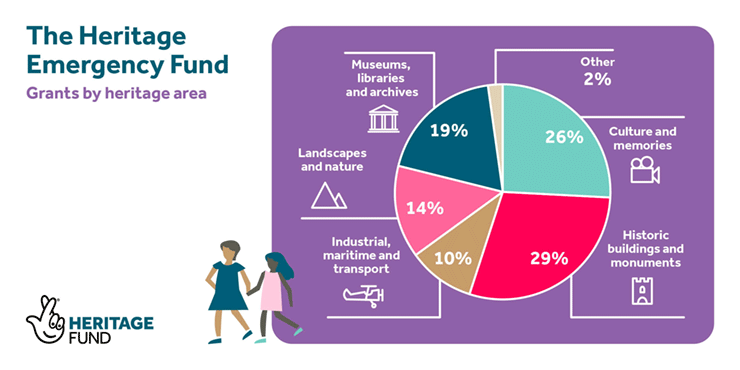
How the money was spent
Heritage Emergency Fund grants were used for everything from keeping wardens employed to protect rare species and refuse collection at safe green spaces that remained open throughout the pandemic, to adapting services to be delivered digitally and implementing new visitor safety measures.
In London and the South of England:
- Glastonbury Abbey - said to be the resting place of the legendary King Arthur - used £217,500 for maintenance of the ruins and grounds in anticipation of visitors returning, as well as purchasing PPE and protective screens to safely reopen.
- With £60,100, Ditchling Museum of Art + Craft was able to bring all staff back from furlough, install a new exhibition and reopen in July.
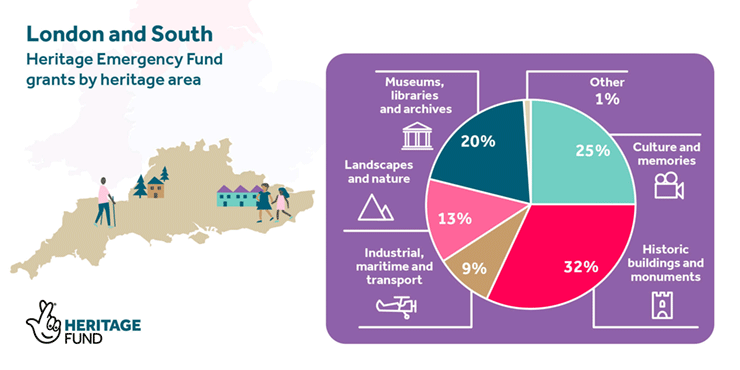
In the Midlands and East of England:
- £247,000 helped Wicksteed Park provide free access to the park, cover staff, security and insurance costs, and look after its animal attractions.
- Harwich Electric Palace – one of the oldest purpose-built cinemas in the UK – used £11,300 for business and sustainability planning, and to purchase PPE and other equipment for a safe re-opening.
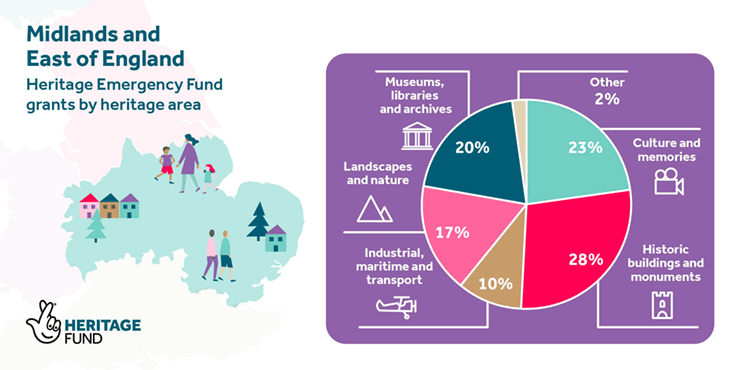
In the North of England:
- The volunteer-led Steam Tug Kerne Preservation Society is using £9,600 to maintain seaworthiness of the tug – the last operational Royal Navy ship that served in the First World War.
- Workhouse Museum & Garden and the Prison & Police Museum, Ripon used £40,100 for roof repairs and a conservation clean ahead of reopening in July.
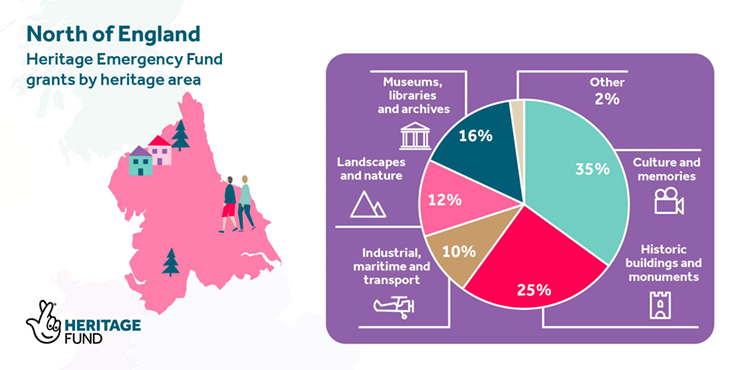
In Northern Ireland:
- Mourne Heritage Trust invested £52,600 in extra equipment to help protect and preserve natural heritage in the Mourne Mountains and surrounding areas after significant increases in footfall.
- £5,300 enabled Armagh Robinson Library – founded by Archbishop Robinson in 1771 to share his collection of books and fine art with the general public – to purchase protective equipment. The equipment was bought from several local Armagh businesses.
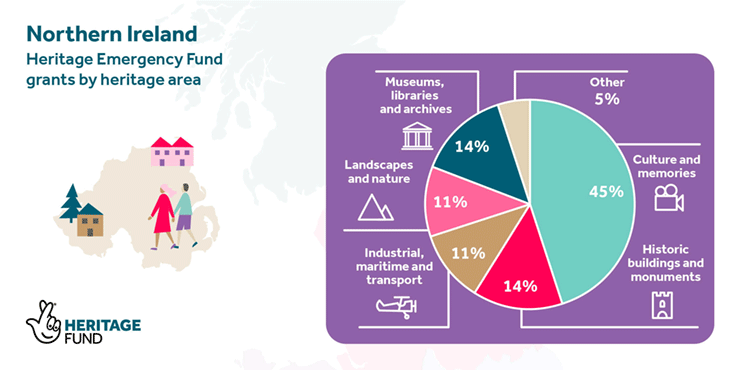
In Scotland:
- The Forth Rivers Trust is using £49,200 to provide safe working practices, extra protection and equipment for volunteers returning to the banks of rivers to carry out vital conservation work.
- £45,500 helped Strathspey Railway pay salaries, carry out essential repairs and maintenance of trains and engines, and prepare for reopening.
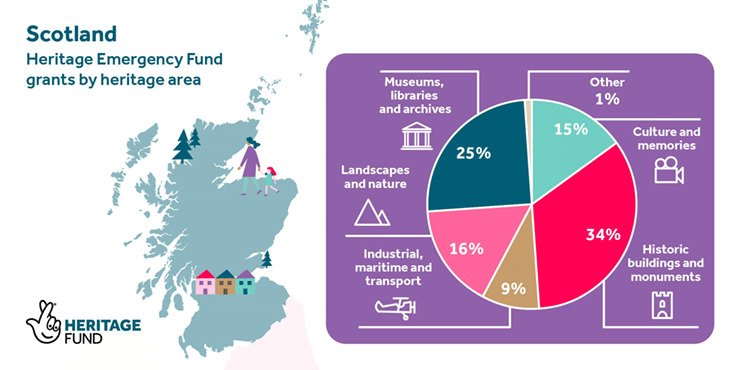
And in Wales:
- Insole Court Trust, the Victorian mansion house and gardens in Llandaff, Cardiff, used £103,600 to help with essential costs, to turn the café into a takeaway and trial a second-hand bookshop on reopening.
- Wildlife Trust of South and West Wales used £48,000 to ensure its wardens could continue to care for the vast colonies of rare seabirds that nest on Skomer and Skokholm islands.
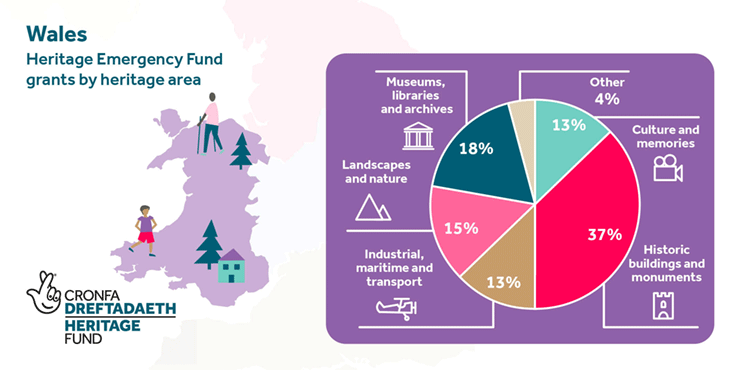
How else we have helped
We maintained our commitment to the more than 2,500 projects already in development and delivery, where our investment totalled over £1billion. At the same time, we halted any new National Lottery Grants for Heritage until 2021 to focus all our resources on helping those most at need during the COVID-19 crisis.
We accelerated the provision of our £1.5m Digital Skills for Heritage initiative. This included producing guides and delivering webinars to support organisations pivoting to digital – many for the first time. And through our Digital Attitudes and Skills for Heritage (DASH) survey, we were able to identify what areas heritage organisations required most help with, and provide advice and resources accordingly.
And at the beginning of this financial year, we renewed our commitment – worth £2m – to our Register of Support Services (ROSS), a network of several hundred freelance and self-employed consultants, and directed their support and mentorship to organisations in need.
What's next?
Ros Kerslake said: “We know heritage still faces challenging times ahead, and we want to help where we can. We are planning additional UK-wide recovery and resilience funding and support from later this year, and we'll share more details as soon as we can.”
Sign up to our newsletter and follow us on social media for the latest updates.